Related Research Articles
Endorphins are peptides produced in the brain that block the perception of pain and increase feelings of wellbeing. They are produced and stored in the pituitary gland of the brain. Endorphins are endogenous painkillers often produced in the brain and adrenal medulla during physical exercise, and inhibit pain, muscle cramps, and relieve stress.

Frederick Sanger was an English biochemist who received the Nobel Prize in Chemistry twice.

Carl Peter Henrik Dam was a Danish biochemist and physiologist.

Pro-opiomelanocortin (POMC) is a precursor polypeptide with 241 amino acid residues. POMC is synthesized in corticotrophs of the anterior pituitary from the 267-amino-acid-long polypeptide precursor pre-pro-opiomelanocortin (pre-POMC), by the removal of a 26-amino-acid-long signal peptide sequence during translation. POMC is part of the central melanocortin system.
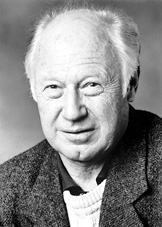
Michael Smith was a British-born Canadian biochemist and businessman. He shared the 1993 Nobel Prize in Chemistry with Kary Mullis for his work in developing site-directed mutagenesis. Following a PhD in 1956 from the University of Manchester, he undertook postdoctoral research with Har Gobind Khorana at the British Columbia Research Council in Vancouver, British Columbia, Canada. Subsequently, Smith worked at the Fisheries Research Board of Canada Laboratory in Vancouver before being appointed a professor of biochemistry in the UBC Faculty of Medicine in 1966. Smith's career included roles as the founding director of the UBC Biotechnology Laboratory and the founding scientific leader of the Protein Engineering Network of Centres of Excellence (PENCE). In 1996 he was named Peter Wall Distinguished Professor of Biotechnology. Subsequently, he became the founding director of the Genome Sequencing Centre at the BC Cancer Research Centre.
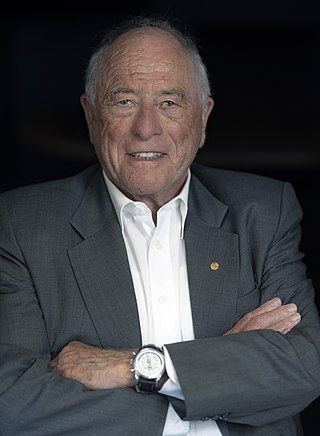
Kurt Wüthrich is a Swiss chemist/biophysicist and Nobel Chemistry laureate, known for developing nuclear magnetic resonance (NMR) methods for studying biological macromolecules.
Corticotropes are basophilic cells in the anterior pituitary that produce pro-opiomelanocortin (POMC) which undergoes cleavage to adrenocorticotropin (ACTH), β-lipotropin (β-LPH), and melanocyte-stimulating hormone (MSH). These cells are stimulated by corticotropin releasing hormone (CRH) and make up 15–20% of the cells in the anterior pituitary. The release of ACTH from the corticotropic cells is controlled by CRH, which is formed in the cell bodies of parvocellular neurosecretory cells within the paraventricular nucleus of the hypothalamus and passes to the corticotropes in the anterior pituitary via the hypophyseal portal system. Adrenocorticotropin hormone stimulates the adrenal cortex to release glucocorticoids and plays an important role in the stress response.
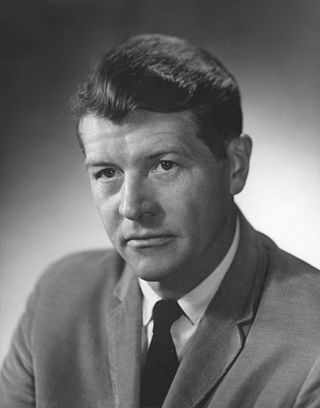
Christian Boehmer Anfinsen Jr. was an American biochemist. He shared the 1972 Nobel Prize in Chemistry with Stanford Moore and William Howard Stein for work on ribonuclease, especially concerning the connection between the amino acid sequence and the biologically active conformation.
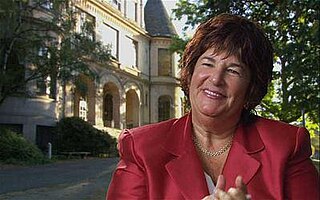
Candace Beebe Pert was an American neuroscientist and pharmacologist who discovered the opiate receptor, the cellular binding site for endorphins in the brain.

An enkephalin is a pentapeptide involved in regulating nociception in the body. The enkephalins are termed endogenous ligands, as they are internally derived and bind to the body's opioid receptors. Discovered in 1975, two forms of enkephalin have been found, one containing leucine ("leu"), and the other containing methionine ("met"). Both are products of the proenkephalin gene.
Choh Hao Li was a Chinese-born American biochemist who discovered, in 1966, that human pituitary growth hormone (somatotropin) consists of a chain of 256 amino acids. In 1970 he succeeded in synthesizing this hormone, the largest protein molecule synthesized up to that time.
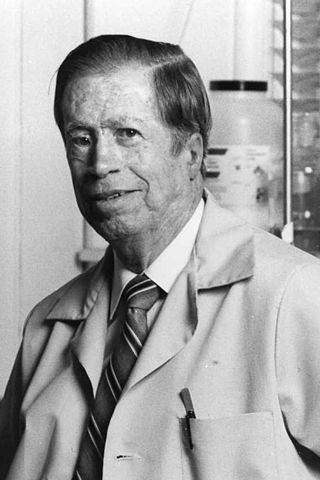
Robert Bruce Merrifield was an American biochemist who won the Nobel Prize in Chemistry in 1984 for the invention of solid phase peptide synthesis.

beta-Endorphin (β-endorphin) is an endogenous opioid neuropeptide and peptide hormone that is produced in certain neurons within the central nervous system and peripheral nervous system. It is one of three endorphins that are produced in humans, the others of which include α-endorphin and γ-endorphin.

VenkatramanRamakrishnan is an Indian-born British and American structural biologist. He shared the 2009 Nobel Prize in Chemistry with Thomas A. Steitz and Ada Yonath for research on the structure and function of ribosomes.
Lipotropin is the name for two hormones produced by the cleavage of pro-opiomelanocortin (POMC). The anterior pituitary gland produces the pro-hormone POMC, which is then cleaved again to form adrenocorticotropin (ACTH) and β-lipotropin (β-LPH).

Corticotropin-like intermediate [lobe] peptide (CLIP), also known as adrenocorticotropic hormone fragment 18-39, is a naturally occurring, endogenous neuropeptide with a docosapeptide structure and the amino acid sequence Arg-Pro-Val-Lys-Val-Tyr-Pro-Asn-Gly-Ala-Glu-Asp-Glu-Ser-Ala-Glu-Ala-Phe-Pro-Leu-Glu-Phe. CLIP is generated as a proteolyic cleavage product of adrenocorticotropic hormone (ACTH), which in turn is a cleavage product of proopiomelanocortin (POMC). Its physiological role has been investigated in various tissues, specifically in the central nervous system.

Thomas Christian Südhof, ForMemRS, is a German-American biochemist known for his study of synaptic transmission. Currently, he is a professor in the School of Medicine in the Department of Molecular and Cellular Physiology, and by courtesy in Neurology, and in Psychiatry and Behavioral Sciences at Stanford University.

alpha-Endorphin (α-Endorphin) is an endogenous opioid peptide with a length of 16 amino acids, and the amino acid sequence: Tyr-Gly-Gly-Phe-Met-Thr-Ser-Glu-Lys-Ser-Gln-Thr-Pro-Leu-Val-Thr. With the use of mass spectrometry, Nicholas Ling was able to determine the primary sequence of a-endorphin.

Huda Akil is a Syrian–American neuroscientist whose pioneering research has contributed to the understanding of the neurobiology of emotions, including pain, anxiety, depression, and substance abuse. Akil and colleagues are best known for providing the first physiological evidence for a role of endorphins in the brain and demonstrating that endorphins are activated by stress and can cause pain inhibition.
References
- ↑ "Announcement". The Times . 14 February 2002. p. 40. ISSN 0140-0460. ProQuest document ID 318606918.
- ↑ Loewy, Ariel G.; Siekevitz, Philip (1991). Cell Structure and Function: An Integrated Approach . Philadelphia: Saunders. p. 169. ISBN 9780030474392. OCLC 1148218832.
- ↑ White, Abraham; Handler, Philip; Smith, Emil L (1973). Principles of Biochemistry . New York: McGraw-Hill. p. 257. ISBN 9780070697584. OCLC 1151061019.
- ↑ Davis, Joel (1984). Endorphins: New Waves in Brain Chemistry . Garden City, New York: Dial Press. pp. 44–45. ISBN 9780385278560. OCLC 1033595208.
- ↑ Hawkes, Nigel (7 October 1978). "Opening the doors of the brain". South China Morning Post . p. 2. ISSN 1021-6731. ProQuest document ID.
… Dr Derek Smyth and his team at the National Institute for Medical Research … isolated a … substance, which they called the C-Fragment of lipotropin. … The most significant of the endorphins seems likely to be the C-Fragment. A much more potent analgesic than any of the other endorphins … it is also much longer-lived in the brain. This led Dr Smyth to suggest that one function of the C-Fragment might be in the long-term control of pain …